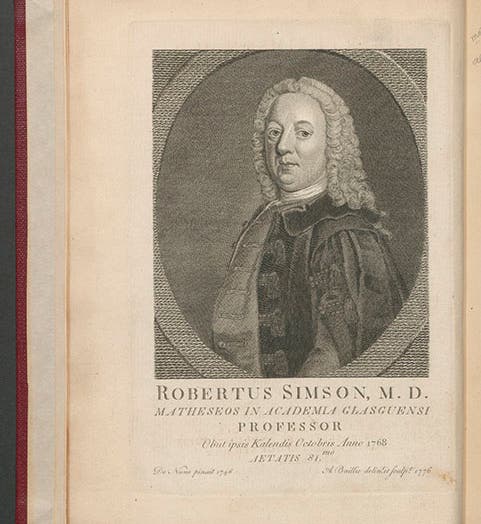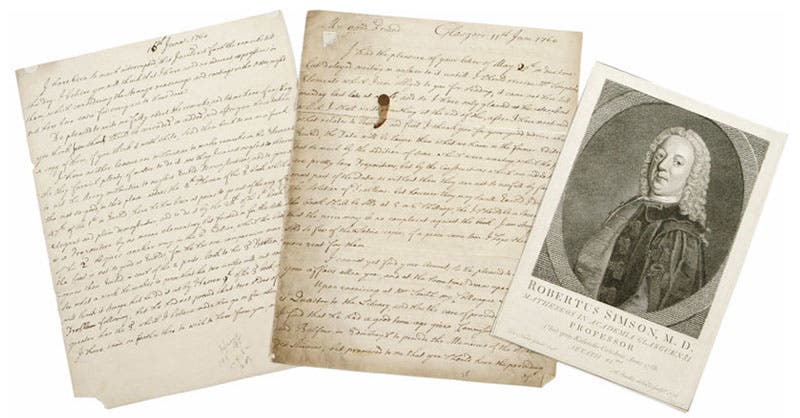Scientist of the Day - Robert Simson
Robert Simson, a Scottish mathematician, was born October 14, 1687. Although Simson attended the University of Glasgow with the intention of entering the ministry, he found his initial studies in theology unsatisfying, and after reading on his own, he developed a fascination with mathematics. In 1711, three days after graduating with his Master of Arts, he was appointed to the chair of mathematics at Glasgow, a position he would hold for 50 years.
From the beginning, Simson’s mathematical interests focused on ancient Greek texts, especially in geometry. Before the start of his position as mathematics professor, he visited several noted mathematicians in England, one of whom was Edmond Halley. Halley is remembered today for his calculation of the orbit of a comet which now bears his name. Halley suggested to Simson that he put his geometrical talents to work on restoring the existing partial versions of the ancient Greek geometers Euclid and Apollonius. Simson followed this advice and in 1723, in the Philosophical Transactions of the Royal Society, he published an article on some of Euclid’s work. Then he published a restoration of work by Apollonius, called Sectionum Conicarum. Above is a picture of the title page from the 1st edition, which appeared in 1735, and can be found at the Linda Hall Library. In addition, the library has a 1750 Latin 2nd edition and a 1792 English 2nd edition, Elements of the Conic Sections.
Continuing on with his goal of perfecting the existing editions of works of ancient Greek geometers, Simson’s restoration of Euclid’s Elements was first published in 1756 (third image). This significant text would later appear in over 70 different editions or translations, a record held by very few mathematics books. In fact, even up until the mid-20th century, most modern geometry textbooks were greatly influenced by Simson’s version of Euclid.
Simson’s work on restoring classic Greek geometry was important. It played a role in the rediscovery of the axiomatic method of the Greeks, which was a contributing factor in an increased concern for rigor in 18th century mathematics. As a result, mathematicians were motivated to put many branches of mathematics, such as calculus and group theory, on firm logical foundations.
A letter with Robert Simson’s signature is being offered at auction, at least at the time of this writing (fourth image). There is a memorial to Simson in a cemetery in the Scottish village of West Kilbride (fifth image). The plaque reads, “To Dr. Robert Simson of the University of Glasgow, the Restorer of Grecian Geometry; and by his works, the great promoter of its study in the Schools. A Native of this Parish.” Dr. Cynthia J. Huffman, former Research Fellow, Linda Hall Library and University Professor, Department of Mathematics, Pittsburg State University. Comments or corrections are welcome; please direct to cjhuffman@pittstate.edu.










